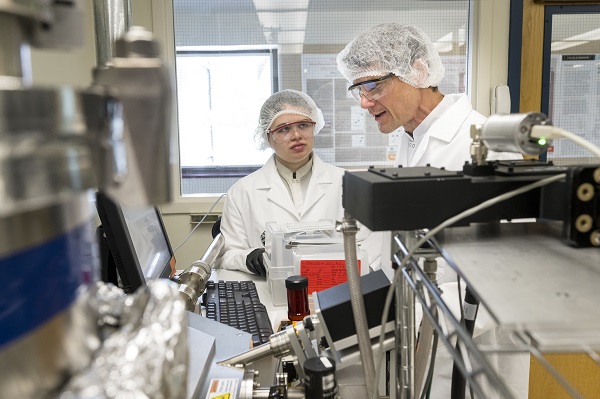According to the U.S. Department of Energy (DOE), a data center can consume up to 50× more energy per square foot of floor space than a typical office building. Data centers account for roughly 2% of all electricity use in the U.S., according to the DOE.
As a result, interconnects characterized by high energy-efficiency systems are needed to reduce power consumption.
In response, researchers at Oregon State University (OSU) and Baylor University have developed a silicon photonics method that reduces the amount of energy consumed by photonic chips used in data centers and supercomputers. Specifically, the energy-efficient method compensates for temperature variations that degrade the chips.
The researchers targeted silicon micro-ring resonators (Si-MRRs) in the work; according to the researchers, Si-MRRs play essential roles in on-chip wavelength division multiplexing (WDM) systems. This is due to their ultracompact size and low energy consumption. However, the resonant wavelength of Si-MRRs is very sensitive to temperature fluctuations and fabrication process variation. “Typically, each Si-MRR in the WDM system requires precise wavelength control by free carrier injection using PIN diodes or thermal heaters that consume high power,” the researchers said.
As a result, significant energy has been required to keep the performance of these chips high and their temperature stable.

Ph.D. student Jessica Peterson and professor John Conley discussing the operation of one of his group’s atomic layer deposition systems. Courtesy of Oregon State University.
The researchers experimentally demonstrated gate-tuning, on-chip WDM filters with large wavelength coverage for the entire channel spacing using an Si-MRR array, driven by high-mobility titanium-doped indium oxide gates. According to the OSU College of Engineering’s John Conley, control of the prototypes via gate voltage meant that virtually no electric current was used to obtain control.
Using the approach, the researchers showed that it is possible to reduce the energy needed for temperature control of photonic chips by a factor of more than 1 million.
The on-chip WDM filters were composed of four cascaded tunable Si-MRRs with metal-oxide semiconductor gates formed by a high-mobility transparent conductive oxide, which show much larger electro-optic efficiencies than reversed p-n junctions.
Researcher Alan Wang, now at Baylor, said that the photonics industry exclusively relies on thermal heaters to fine tune the working wavelengths of high-speed, electro-optic devices and optimize their performance. These thermal heaters consume several milliwatts of electricity per device, he said.
“That might not sound like much considering that a typical LED light bulb uses 6 to 10 watts,” Wang said. “However, multiply those several milliwatts by millions of devices and they add up quickly, so that approach faces challenges as systems scale up and become bigger and more powerful.”
"Our method is much more acceptable for the planet,” Conley added. “It will one day allow data centers to keep getting faster and more powerful while using less energy so that we can access ever more powerful applications driven by machine learning, such as ChatGPT, without feeling guilty.”
The research was supported by Intel, NASA, and the National Science Foundation, and was published in Scientific Reports (www.doi.org/10.1038/s41598-023-32313-0).